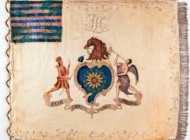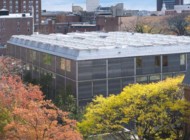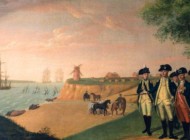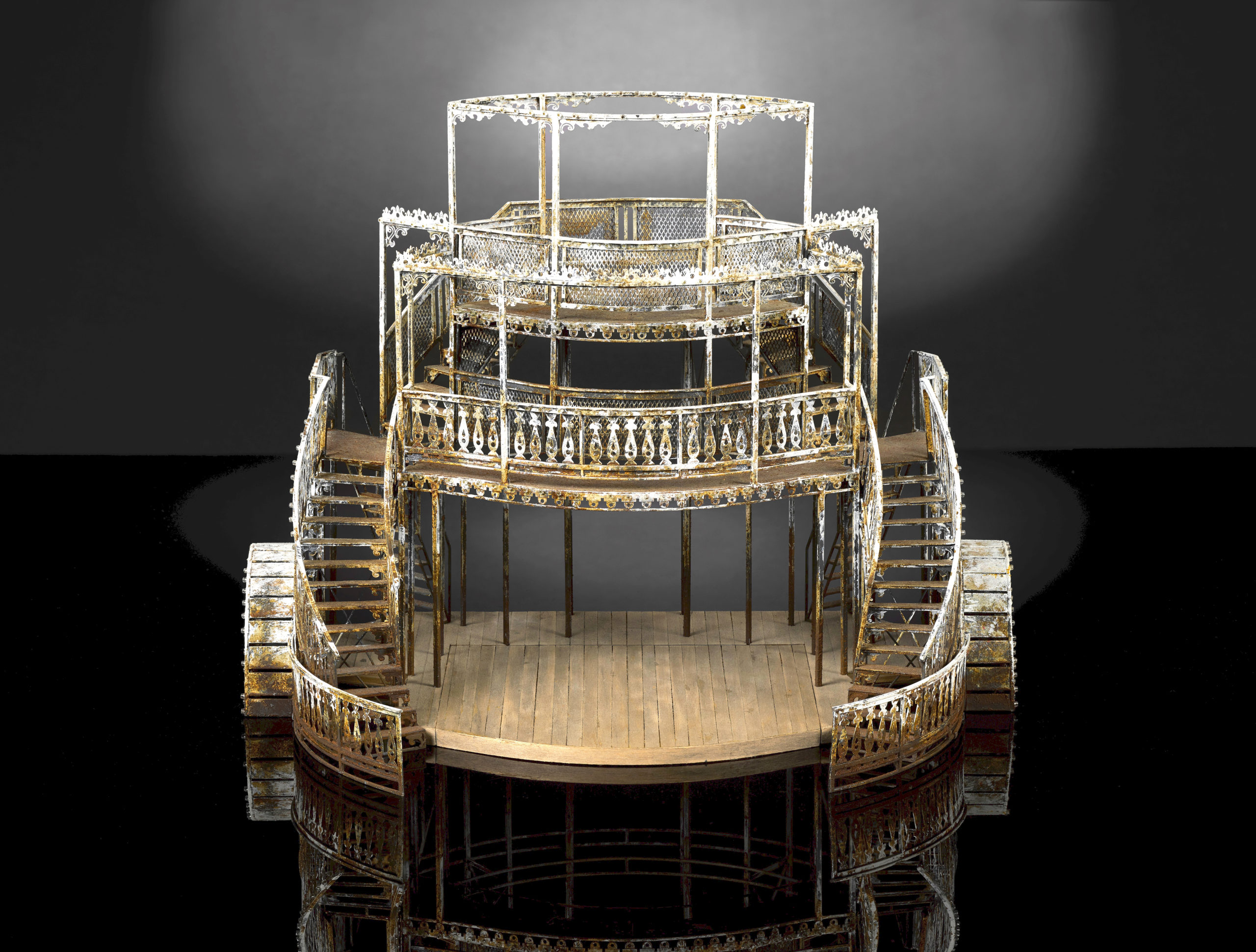
Set model for Show Boat designed by Lez Brotherston, 2016. Given by Lez Brotherston. ©Lez Brotherston. Image courtesy of Victoria and Albert Museum, London.
By Karla K. Albertson
LONDON – Going to London sometime this year? Planning to take in a show? First stop should be a show about shows – the fabulous free display at the V&A, called “Re: Imagining Musicals,” which continues through November 23 of this year.
The famous institution may bear the names of Victoria and Albert, the Nineteenth Century’s favorite royal couple, but there is nothing we would call “Victorian” about the concepts behind this project.
In the historic building, the event gathers 100 objects, including both brand new acquisitions and treasures from the archives that have been long unseen. Objects in the display included posters, design drawings, photographs and – best of all – actual costumes from My Fair Lady, Annie, The Lion King, Wicked and others.
Note the tricky title – because the exhibits in the display are really about the creative people behind what we see on stage, the ones with the imagination. The culmination of their work gives musicals the ability to turn dry history and classic themes from literature and legend into inventive stage productions that earn standing ovations and repeat visits.
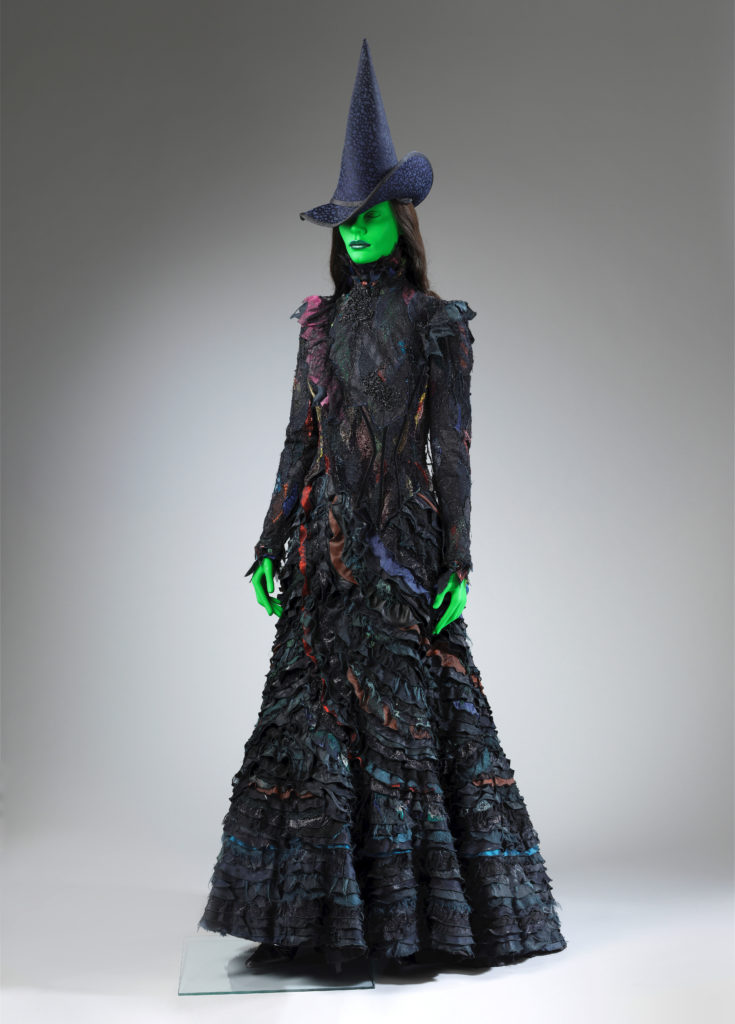
Costume worn by Kerry Ellis as Elphaba in Wicked, Apollo Victoria Theatre, 2006. Designed by Susan Hilferty. Given by Wicked London Productions Ltd. ©Susan Hilferty. Image courtesy of Victoria and Albert Museum, London.
Remember AP American History? Not really? But then, Lin Manuel-Miranda and Hamilton brought the Founding Fathers to life with an entirely new rhythm and then people stood in line. An original poster signed by the cast from its 2015 off-Broadway opening is on view.
On stage, the classic film of L. Frank Baum’s The Wizard of Oz (1939) turned into The Wiz on Broadway in 1975, winning seven Tony awards. Then, the 2003 musical Wicked took an entirely new approach to the tale. Visitors can see an eerie green mannequin with the costume worn by Kerry Ellis as Elphaba.
Antiques and The Arts Weekly put some questions to organizer Simon Sladen, the senior curator for Modern and Contemporary Theatre, about how this unusual display came about. He explained, “The inspiration for this project included a number of things actually. We’d never approached theatre previously in a major project. So, we wanted to look at what we had in the collection, and we wanted to increase our representation in the genre of musical theatre. Most of our material ended in the 1980s and early 1990s, so we wanted to make sure our collection was still current and reflected the large amount of activity up to the present day.”
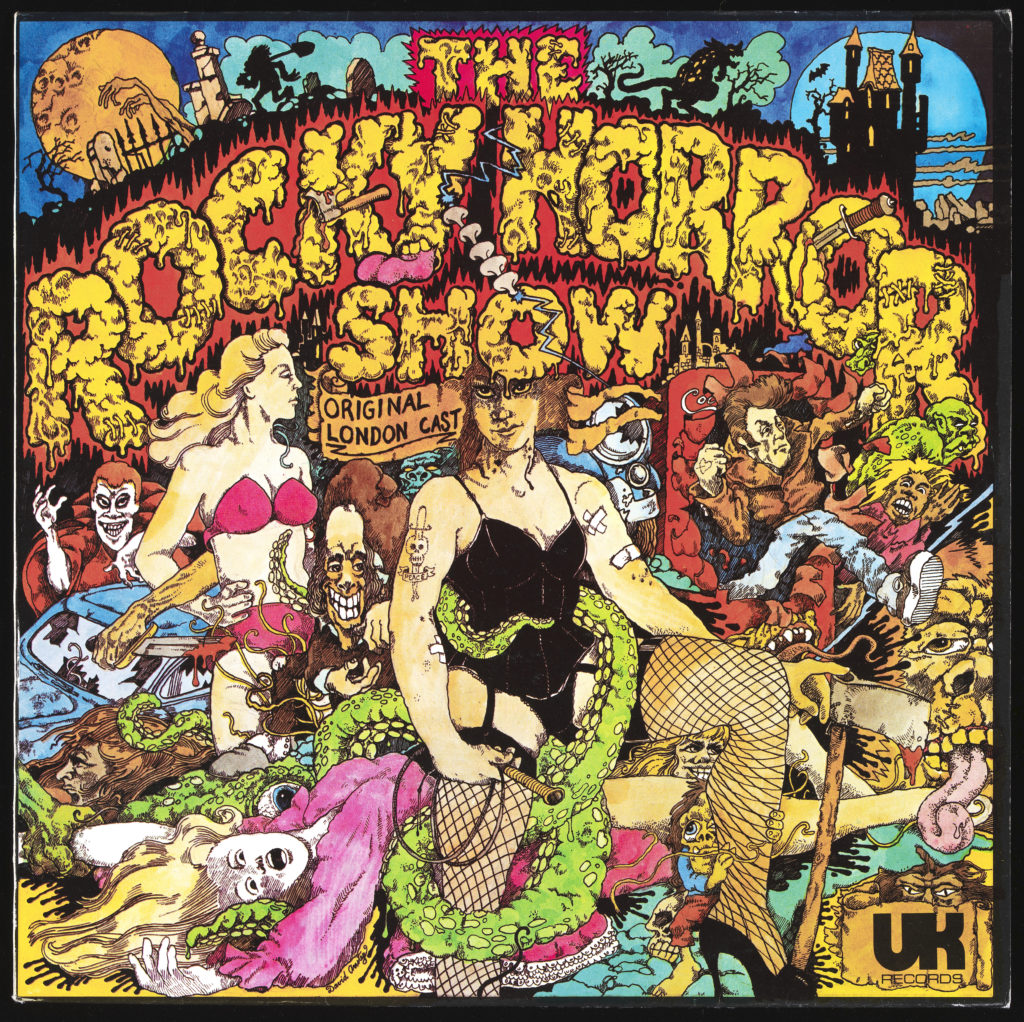
Original cast recording for The Rocky Horror Show, 1973. Given by Overtures: The Bunnett-Muir Musical Theatre Archive Trust. Artwork ©Brian Thomson. Image courtesy of Victoria and Albert Museum, London.
“We were also very, very lucky to have recently acquired a large collection from Overtures: The Bunnett-Muir Musical Theatre Archive Trust, which includes thousands of vinyl cast recordings – musicals that you like, musicals that you may never have heard before. We wanted to celebrate that acquisition.”
“And we’ve gone through that period of lockdown, and I wanted this to be a celebration of the industry. To explain some of those areas, creatives have gone through and drawn inspiration from – a book, a play, a song or a film. How that has been brought to the stage and how over time that might have been evolved. There are new adaptations – you might change the musical styling, you might change the time period. It’s really a call to action – where can your imagination take you?”
Even if your plans do not include a trip to London, “Re: Imagining Musicals” is set up so you can enjoy filmed features on the Victoria & Albert website at https://www.vam.ac.uk/exhibitions/reimagining-musicals#events
Go to the section titled “Features” and explore “Costume design: Moulin Rouge! The Musical – Satine’s Sparkling Diamond Costume.” Harriet Reed, curator of Contemporary Performance at the museum, talks with Catherine Zuber, the actual costume designer for the 2021 production, about the brilliant outfit on display.
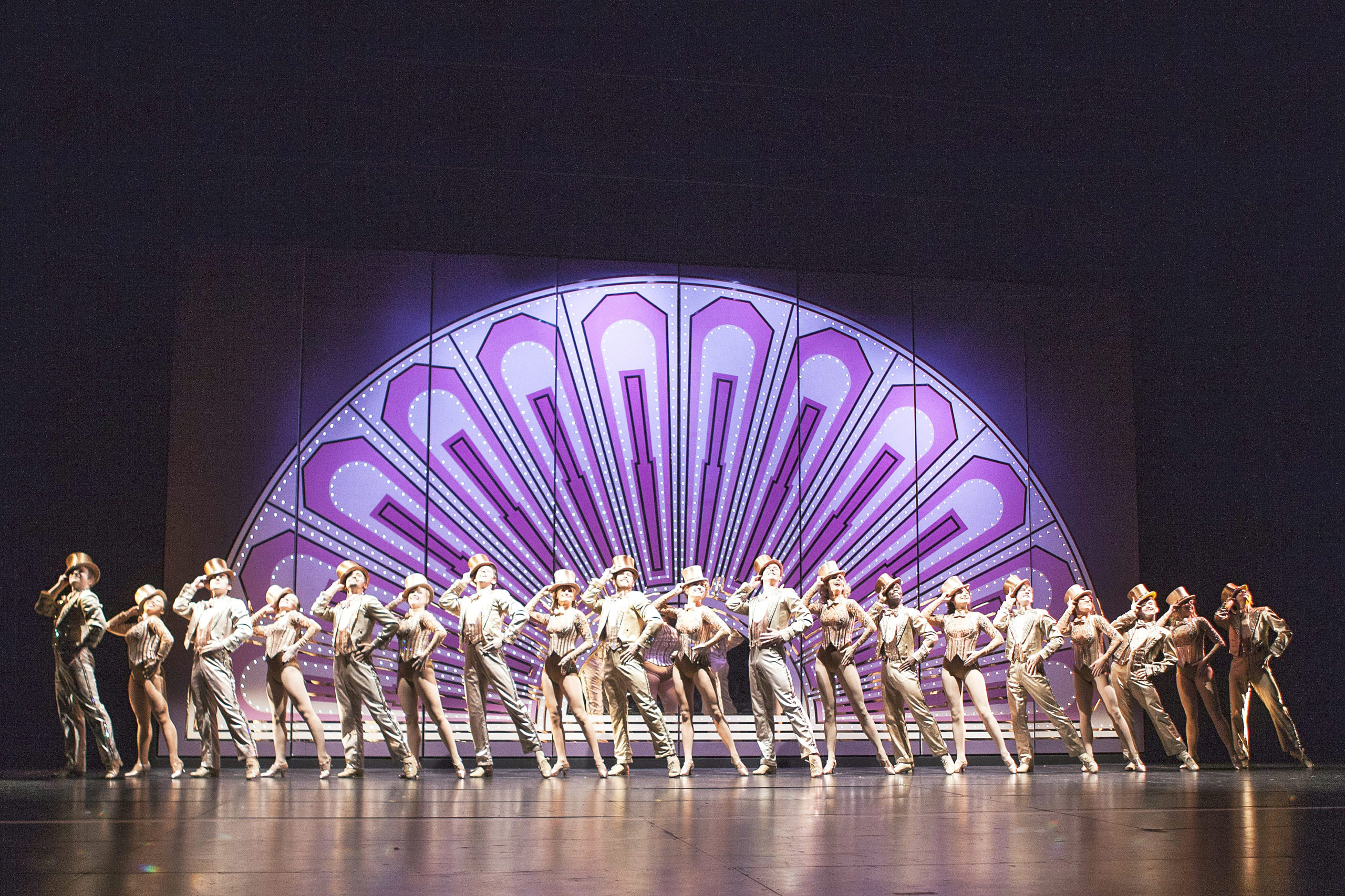
Photocall for the production of A Chorus Line, London Palladium, 2013. ©Victoria and Albert Museum, London. London Palladium.
Zuber explains: “What I have here are the final sketches for Satine and her dancers in the “Diamonds” number. The top illustration shows what they look like when they first appear. They release their clothing and underneath there’s another costume – that happens quite instantaneously.”
“The designs are the result of lots of sketches, lots of R&D, lots of experimentation. This costume of Satine’s first started out being a red evening gown – it was a beautiful dress and it worked quite well – but we felt we could go a little bit further…. So I did a lot of research on showgirls through the ages.”
“What you see here is just one ensemble – also a necklace, a top hat with crystals, gloves that are completely crystalized. In the back, there would be feathers to the ground. Boots that are custom made with crystals – so there is lots of sparkle going on.”
In the film, Zuber demonstrates the secret of the fast change where Satine gets off the swing and immediately one costume falls away to reveal another. “Quite a work of engineering,” she admits and exciting to watch.
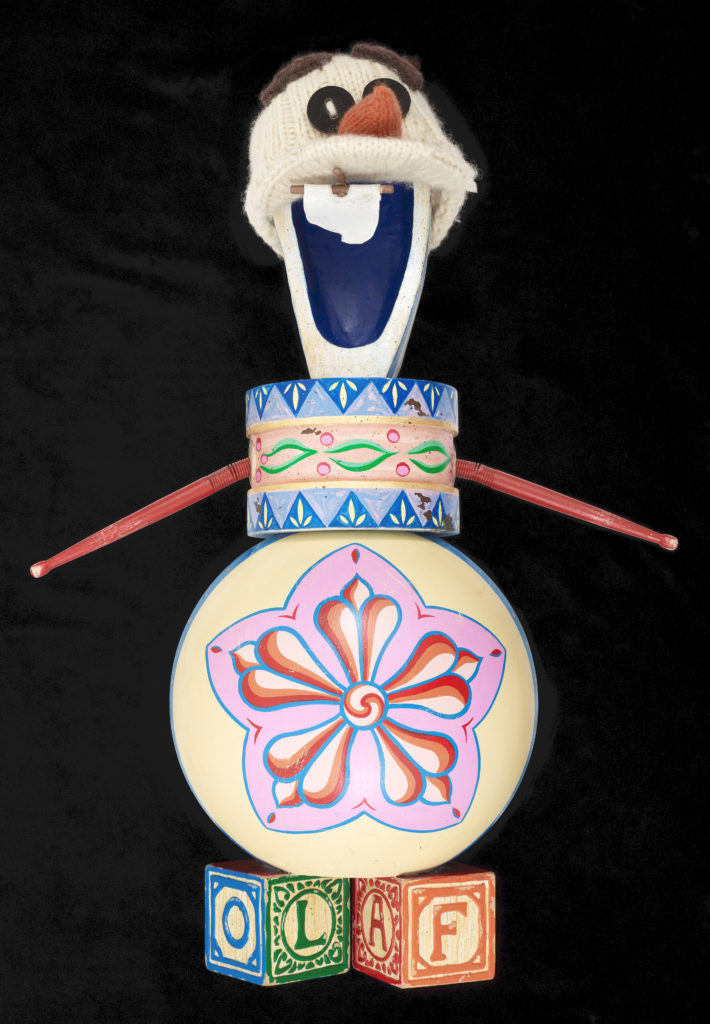
Toy Olaf, created by Young Anna and Young Elsa in the opening scene of Frozen the Musical. Design by Christopher Oram. Given by The Walt Disney Company. ©The Walt Disney Company. Image courtesy of Victoria and Albert Museum, London.
Another section “Costume conservation: My Fair Lady” features Simon Sladen visiting the conservation department as they work on the fragile ball gown worn by Julie Andrews as Eliza Doolittle at the Theatre Royal, Drury Lane, in 1958. The dress was designed by Cecil Beaton (1904-1980), talented in so many areas, famous for his photography. The feature provides an up close look at all the steps necessary to prepare the delicate fabric and beading for display on a mannequin.
The curator includes this dress as one of the many highlights of the ongoing display. He hopes that the next generation of creative practitioners will be inspired by seeing these successful designs from past musicals in a setting where they can personally examine and connect with them.
In conclusion, Sladen points out that this is an “opportunity for people to get up close – which give them a much better view than if they sat in the audience. It’s really a celebration of musical theater and all those people who make it happen. We want to shine a spotlight on all the creators and makers working in the industry today.”
The Victoria & Albert Museum is on Cromwell Road, at Exhibition Road. For more information, www.vam.ac.uk.

















